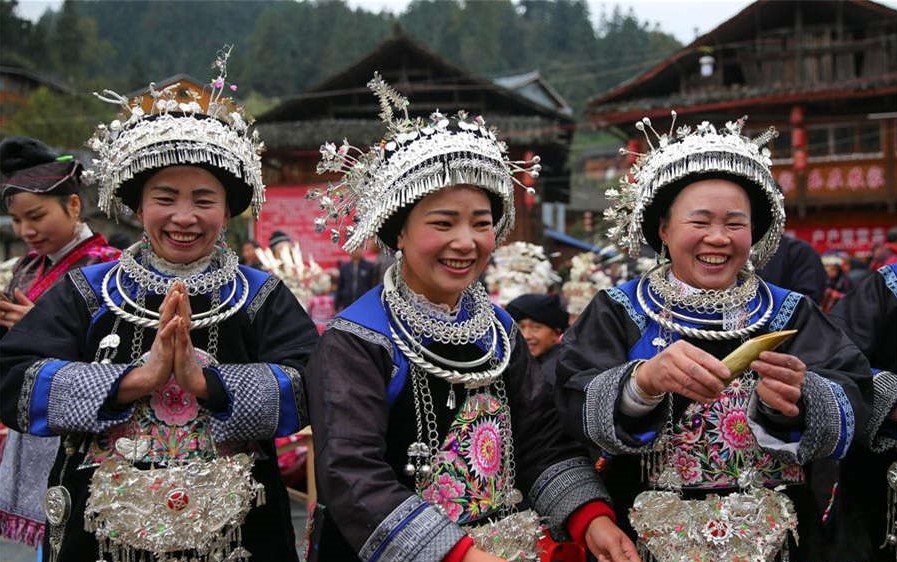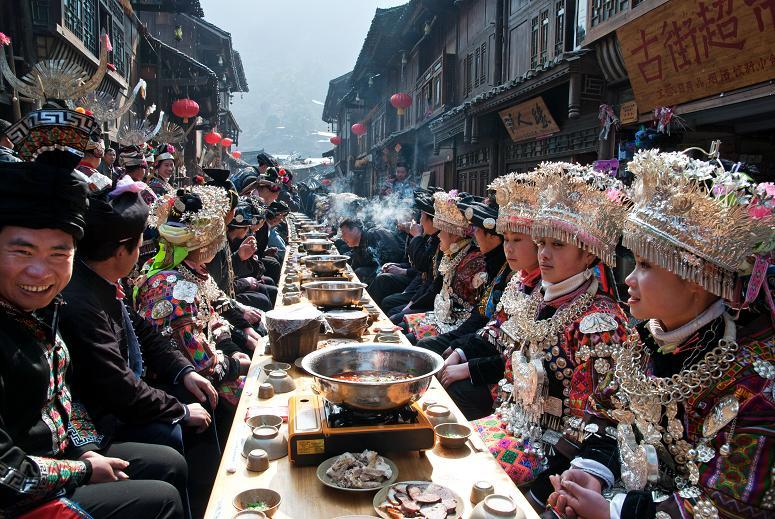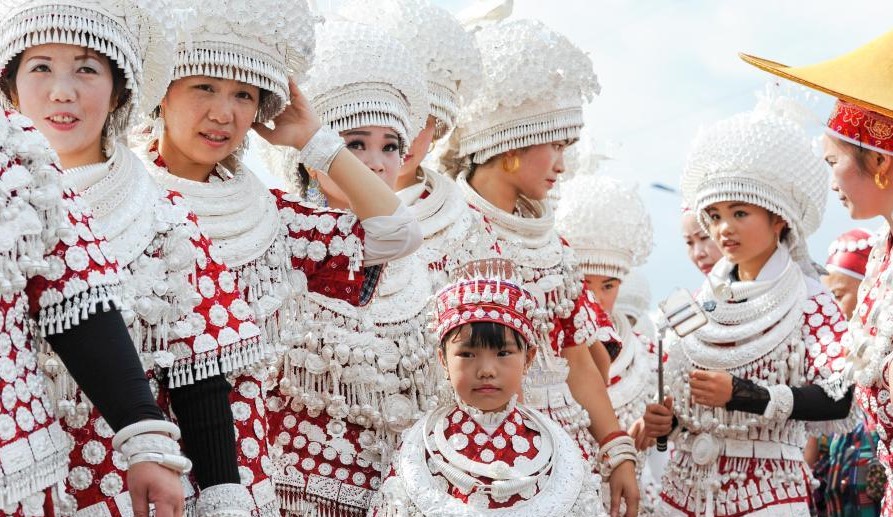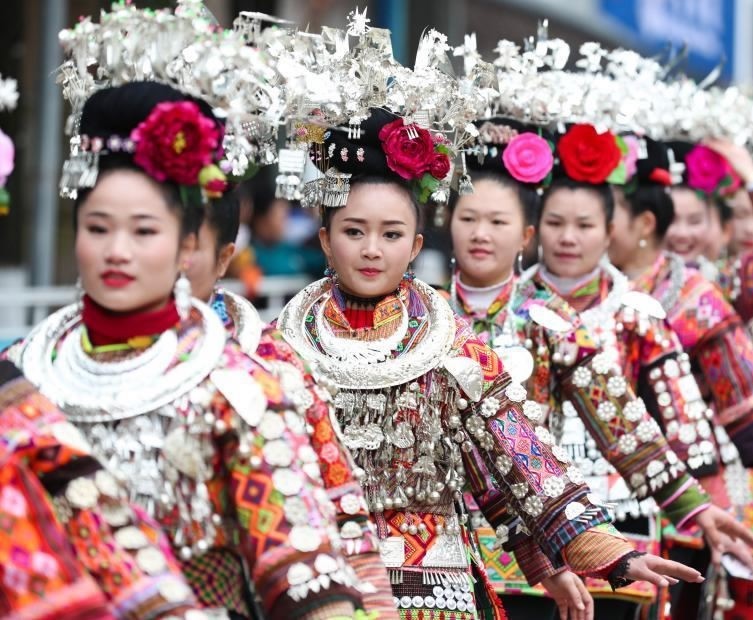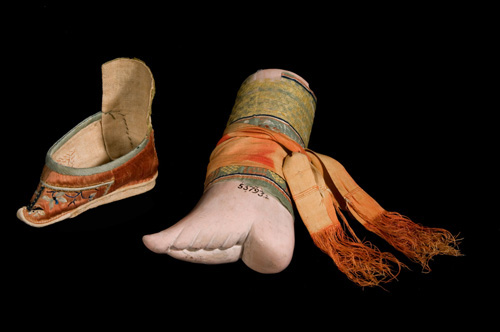Written by Helen McGlade
The Miao Hmong people are one of China’ 55 recognised ethnic minority groups, living predominantly in Southwestern China. Known for their breath-taking embroidery and silversmithing, the ‘Miao Hmong’ classification encompasses a wide diversity of peoples, cultures and languages. Originally a nomadic people, the Miao Hmong had no written language and so recorded their history and mythology in richly detailed, vibrant embroidery. Today let’s explore some of the symbolism woven into this beautiful textile art, recognised as National Intangible Cultural Heritage by the Chinese government in 2006!

The Butterfly
One of the most common symbols in Miao embroidery is the butterfly and I bet you’re all wondering why… Well, taking the needle for a pen and thread for ink, Miao women embroider their creation myth onto the garment, and guess who’s the most important figure in the Miao creation myth? Mother Butterfly of course! As legend has it, long, long ago when the world was at peace, the immortal maple tree gave birth to a butterfly. This beautiful butterfly fell head over heels in love with a water bubble and laid twelve eggs. The maple tree transformed into a big bird that hatched the eggs, one a year, for twelve years. Out of these eggs came a thunder god, a dragon, a buffalo, a tiger, an elephant, a snake, a centipede, a boy called Jiangyang, and his sister, from whom the Miao people are descended. So, as you can see the Butterfly is the mother of gods, animals and human beings – a very important symbol!


The Pomegranate Blossom
Other symbols include the pomegranate flower, the sun and the moon and curling patterns of thread! The rich, red blossom of the pomegranate tree has many seeds and translates to a symbol of fertility in Miao embroidery. Multiple seeds mean thriving offspring, so by embroidering the flower, the Miao women represent their wish for a flourishing family.

Celestial Bodies
As for the sun and the moon, this harks back to another foundation legend of the creation of the universe: in the beginning, there were ten suns and ten moons in the sky. The ancestor of humanity arrived and shot down eighteen of these celestial bodies until there remained only one sun and one moon. Often, Miao women choose to embroider ten suns and moons on their garments to remember and celebrate the creation of the world. Finally, the curling pattern also links to the legendary beginning of the world, a world where there was as yet no earth or sky, simply this spiralling, waving entity. By adding this pattern, the old legends are remembered and passed down to future generations, ensuring the Miao people do not forget their origins.

The Dragon
As I mentioned before, the ‘Miao’ name encompasses a wide variety of smaller ethnic groups. It is important to note how individual ethnic identity is expressed through adaptation of different important symbols. For example, the dragon, a symbol of imperial power for the Han ethnic groups, is also an important part of Miao culture. Yet, different Miao groups embroider this symbol in different ways. Miao women living Bala River basin tend to embroider dragons in a green colour, with leaf- or stalk-like bodies. These dragons usually do not have horns or feet, rather they have crests on their hands! However, the Miao women of Shidong town present the dragon in red or blue threads, with a scaley body, horns and big ears. By presenting a specific image of the dragon in the embroidery, the Miao women living in neighbouring areas establish the ethnic mark of their own subgroups, displaying their own affiliation and weaving multiple layers of identity into the cloth.

Embroidery skills are passed on from generation to generation; mothers start teaching their daughters from the age of six or seven, as the skill is so complex to learn! In transferring the skills of embroidery, children learn the history and legends of their people, grounding and enriching their Miao identity. I hope you’ve enjoyed this small tour of symbolism in Miao embroidery. There are so many symbols still to explore and I encourage you to go and discover more for yourself!

About Interact China
“A Social Enterprise in E-commerce Promoting Oriental Aesthetic Worldwide!”
Aileen & Norman co-founded Interact China in 2004 with specialization in fine Oriental Aesthetic products handmade by ethnic minorities & Han Chinese. Having direct partnerships with artisans, designers, craft masters and tailors, along with 13 years of solid experience in e-commerce via InteractChina.com, we are well positioned to bridge talented artisans in the East with the rest of the world, and directly bring you finely selected products that are of good quality and aesthetic taste.
So far we carry 3000+ goods covering Ladies Fashion via ChineseFashionStyle.com, Kungfu Fashion, Home Furnishings, Babies & Kids, Painting Arts, Textile Arts, Carving Arts, Tribal Jewelry Art, Wall Masks and Musical Instruments. Our team speak English, French, German, Spanish and Italian, and serve customers worldwide with passion and hearts.
P.S. We Need People with Similar Passion to Join Our Blogging Team!
If you have passion to write about Oriental Aesthetic in Fashion, Home Decor, Art & Crafts, Culture, Music, Books, and Charity, please contact us at bloggers@interactchina.com, we would love to hear from you!











































